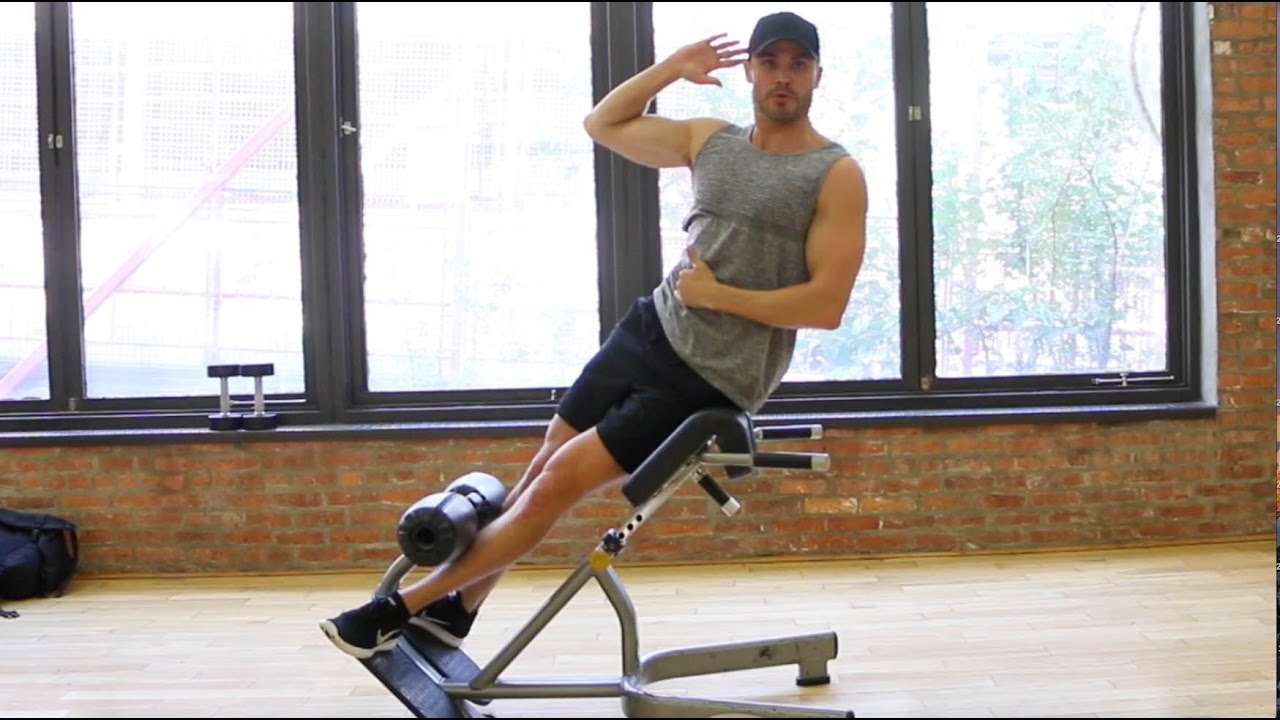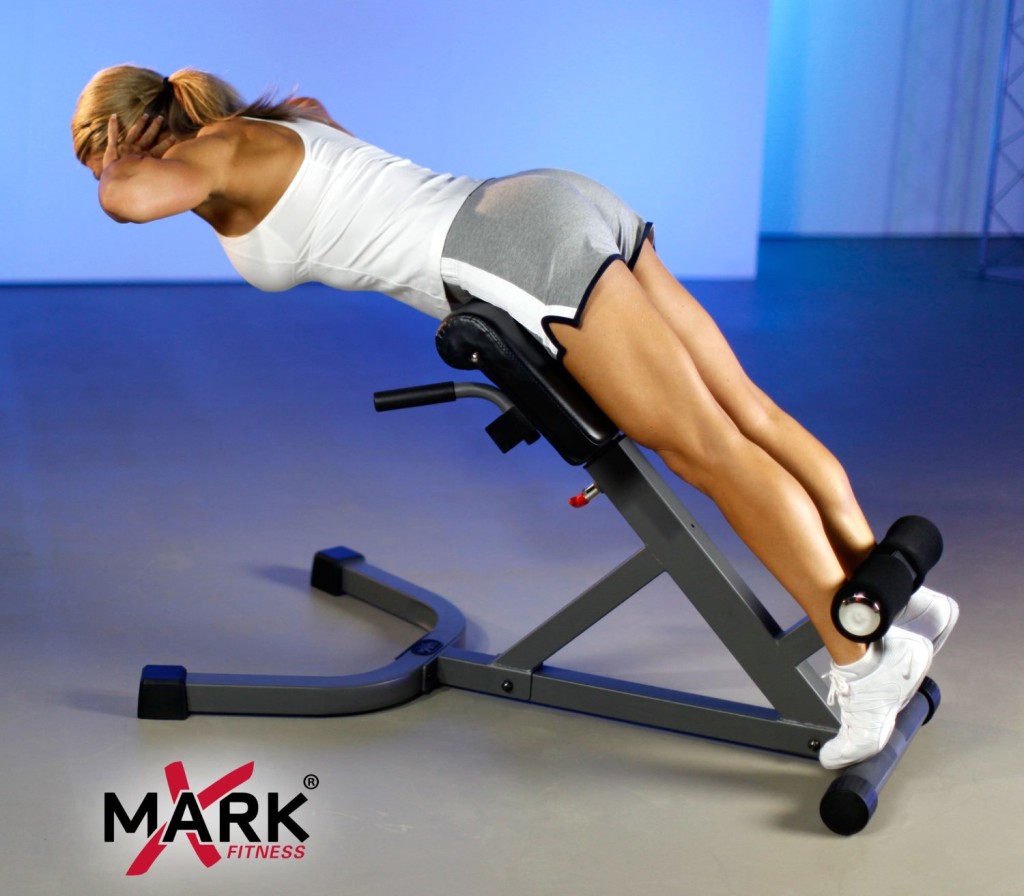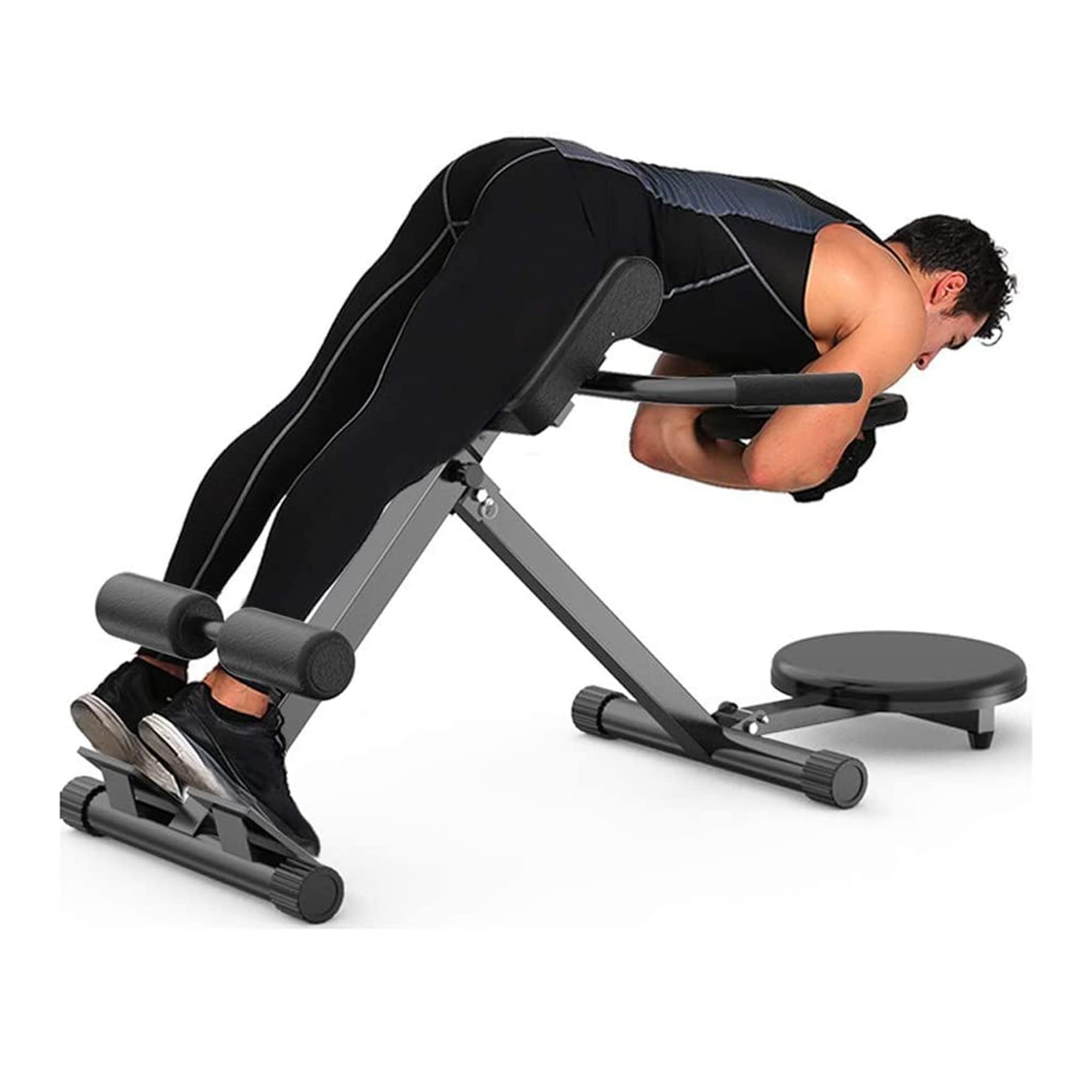Potential Benefits of Roman Chair Exercises

The Roman chair is a popular piece of exercise equipment that can be used to target a variety of muscle groups, particularly those in the core. While it is essential to use proper form to prevent injuries, Roman chair exercises offer numerous benefits for individuals seeking to enhance their strength, posture, and overall fitness.
Strengthening Core Muscles
Roman chair exercises effectively engage the core muscles, including the erector spinae, obliques, and abdominal muscles. These muscles are crucial for maintaining proper posture, supporting the spine, and enabling efficient movement.
- Erector Spinae: The erector spinae muscles run along the back and are responsible for extending and rotating the spine. Roman chair exercises like hyperextensions and back extensions directly target these muscles, strengthening them and improving spinal stability.
- Obliques: The obliques are located on the sides of the abdomen and are responsible for twisting and bending the torso. Roman chair exercises, such as side bends and oblique crunches, effectively engage the obliques, enhancing core strength and rotational power.
- Abdominal Muscles: The abdominal muscles, including the rectus abdominis and transverse abdominis, are essential for core stability and proper posture. Roman chair exercises, such as sit-ups and leg raises, challenge these muscles, promoting increased strength and definition.
Improving Posture and Reducing Lower Back Pain, Is roman chair bad for back
A strong core is essential for maintaining proper posture. Weak core muscles can lead to slouching, which can put stress on the spine and contribute to lower back pain. Roman chair exercises help strengthen the core muscles, which in turn improves posture and reduces the risk of lower back pain.
“A strong core can help improve posture and reduce lower back pain by supporting the spine and improving muscle balance.”
Roman chair exercises also help to increase flexibility in the back, which can further improve posture and reduce lower back pain.
Examples of Roman Chair Exercises and Their Benefits
There are a variety of Roman chair exercises that can be incorporated into a workout routine to target specific muscle groups.
- Hyperextensions: This exercise targets the erector spinae muscles and helps to strengthen the lower back. It involves lying face down on the Roman chair with the hips secured and extending the torso upwards.
- Back Extensions: Similar to hyperextensions, back extensions focus on the erector spinae muscles but can be modified to target different areas of the back. They involve lying face down on the Roman chair with the hips secured and extending the torso upwards while maintaining a slight bend in the knees.
- Sit-Ups: Sit-ups engage the abdominal muscles and help to strengthen the core. They involve sitting on the Roman chair with the feet secured and using the abdominal muscles to lift the torso upwards.
- Leg Raises: Leg raises target the lower abdominal muscles and help to improve core stability. They involve lying face down on the Roman chair with the hips secured and raising the legs upwards.
- Oblique Crunches: Oblique crunches target the oblique muscles and help to improve rotational power. They involve sitting on the Roman chair with the feet secured and twisting the torso to one side while bringing the opposite elbow towards the knee.
Benefits for Athletes and Individuals Seeking to Improve Overall Fitness
Roman chair exercises can be beneficial for athletes in various sports by improving core strength, stability, and flexibility. These benefits can enhance performance in activities requiring core strength, such as running, swimming, and weightlifting.
For individuals seeking to improve overall fitness, Roman chair exercises can contribute to a well-rounded workout routine. They can help to improve posture, reduce lower back pain, and enhance overall core strength and stability.
Potential Risks of Roman Chair Exercises

While the Roman chair offers numerous benefits for strengthening the core, it’s crucial to acknowledge the potential risks associated with improper form and technique. Failing to maintain correct posture can lead to injuries, particularly to the lower back. This section delves into the potential risks of Roman chair exercises, emphasizing the importance of proper form and technique to mitigate these risks.
Risks of Improper Form and Technique
Improper form and technique during Roman chair exercises can significantly increase the risk of back injuries. The Roman chair requires maintaining a hyperextended position, which places considerable stress on the lower back. This stress can be exacerbated by improper form, leading to muscle strains, ligament tears, and even herniated discs.
Maintaining a neutral spine and engaging the core muscles is paramount to minimizing the risk of back injuries.
Potential for Overtraining and Muscle Strain
Overtraining is a common concern with any exercise, and Roman chair exercises are no exception. Beginners, in particular, are susceptible to muscle strain and injury due to the demanding nature of the exercises. It’s essential to start slowly and gradually increase the intensity and duration of workouts to allow the body to adapt.
Individuals at Higher Risk for Back Injuries
Individuals with pre-existing back conditions, such as spinal stenosis, herniated discs, or scoliosis, are at a higher risk for back injuries when using the Roman chair. The hyperextended position can exacerbate these conditions, leading to pain and further injury. It’s crucial for individuals with back issues to consult with a healthcare professional before attempting Roman chair exercises.
Comparison to Other Core Strengthening Exercises
While the Roman chair can be an effective core strengthening exercise, it’s important to consider other exercises that may pose a lower risk of injury. Planks, bird dogs, and dead bugs are excellent alternatives that engage the core muscles without placing excessive stress on the lower back. These exercises are generally considered safer for individuals with back issues or those new to core training.
Alternative Core Strengthening Exercises: Is Roman Chair Bad For Back

While the Roman chair can be an effective exercise for building core strength, it may not be suitable for everyone, especially individuals with back pain or other concerns. This section explores alternative core strengthening exercises that offer a safer approach to targeting the core muscles.
Alternative Core Strengthening Exercises
A variety of alternative exercises can strengthen the core muscles without the potential risks associated with the Roman chair. These exercises engage different muscle groups and can be modified to suit individual fitness levels and needs.
Table of Alternative Core Strengthening Exercises
The table below provides a detailed overview of alternative core strengthening exercises, including their target muscles, benefits, and potential risks:
| Exercise Name | Target Muscles | Benefits | Potential Risks |
|—|—|—|—|
| Plank | Transverse abdominis, rectus abdominis, obliques, erector spinae | – Improves core stability and strength
– Enhances posture
– Reduces risk of back pain | – May strain the wrists if proper form is not maintained
– Can be challenging for beginners |
| Bird Dog | Transverse abdominis, rectus abdominis, obliques, glutes, erector spinae | – Improves core stability and balance
– Strengthens the back and glutes
– Enhances coordination | – Requires good balance and control
– May strain the back if performed incorrectly |
| Side Plank | Obliques, transverse abdominis, rectus abdominis | – Strengthens the obliques and core stability
– Improves posture
– Can help reduce lower back pain | – May strain the wrists if proper form is not maintained
– Can be challenging for beginners |
| Dead Bug | Transverse abdominis, rectus abdominis, obliques | – Improves core stability and control
– Strengthens the abdominal muscles
– Can help reduce lower back pain | – Requires good coordination and control
– May strain the back if performed incorrectly |
| Knee Drive | Rectus abdominis, obliques, hip flexors | – Strengthens the abdominal muscles
– Improves core stability
– Can be a dynamic exercise | – May strain the back if performed incorrectly
– Requires good coordination and control |
| Hollow Body Hold | Transverse abdominis, rectus abdominis, obliques | – Improves core stability and strength
– Enhances posture
– Can help reduce lower back pain | – Can be challenging for beginners
– Requires good control and coordination |
| Superman | Erector spinae, glutes, hamstrings | – Strengthens the back muscles
– Improves posture
– Can help reduce lower back pain | – May strain the back if performed incorrectly
– Requires good control and coordination |
Sample Workout Routine
This sample workout routine incorporates a variety of core strengthening exercises without using the Roman chair. It can be modified based on individual fitness levels and goals.
Warm-up:
– 5 minutes of light cardio, such as walking or jogging in place
– 5 minutes of dynamic stretching, such as arm circles, leg swings, and torso twists
Workout:
– Plank: 3 sets of 30 seconds hold
– Bird Dog: 3 sets of 10 repetitions per side
– Side Plank: 3 sets of 30 seconds hold per side
– Dead Bug: 3 sets of 10 repetitions per side
– Knee Drive: 3 sets of 10 repetitions per side
– Hollow Body Hold: 3 sets of 30 seconds hold
– Superman: 3 sets of 10 repetitions
Cool-down:
– 5 minutes of static stretching, such as holding a hamstring stretch or a quad stretch
Important Considerations:
– Focus on proper form to avoid injuries.
– Progress gradually by increasing the duration or repetitions as you get stronger.
– Listen to your body and stop if you feel any pain.
– Consult with a healthcare professional or certified personal trainer for personalized guidance.
Is roman chair bad for back – So, you’re wondering if a Roman chair is bad for your back? Well, it can be if you’re not careful, mate. But if you’re looking for a more comfy option, check out the briessa mid back chair brown – it’s got a supportive design that’ll keep your back happy.
Anyway, back to the Roman chair, it’s all about proper form and listening to your body. If you’re feeling any twinges, stop and give it a rest.
The Roman chair can be a bit of a beast, especially if you’re not careful. You’ve got to be mindful of your form, or you could end up with a back that’s worse than a student’s essay after a three-day bender.
But hey, at least you’ll have something to write about, like that brilliant poem down the back of the chair poem – a true testament to the forgotten treasures we all have lurking around. Anyway, back to the Roman chair, if you’re not sure about your form, best to chat to a PT or maybe just stick to those less risky gym machines.